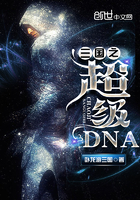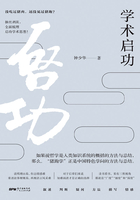The modern age is an age of electricity. People are so used to electric lights, radio, televisions, and telephones that it is hard to imagine what life would be without them. When there is a power failure, people grope about in flickering① candlelight, cars hesitate in the streets because there are no traffic lights to guide them, and food spoils in silent refrigerators.
Yet, people began to understand how electricity works only a little more than two centuries ago. Nature has apparently been experimenting in this field for millions of years. Scientists are discovering more and more that the living world may hold many interesting secrets of electricity that could benefit humanity.
All living cells send out tiny pulses of electricity. As the heart beats, it record the pulses sent by heart, then form an electrocardiogram②, with which a doctor can study to determine how well the heart is working. The brain also sends out brain waves of electricity, which can be recorded in an electroencephalogram too. The electric currents generated by most living cells are extremely small—often so small that sensitive instruments are needed to record them. But in some animals, certain muscle cells have become as specialized as electrical generators that they do not work as muscle cells at all. But when large numbers of these cells are linked together, the effects can be astonishing.
The electric eel is just an amazing storage battery. It can send a jolt③ of as much as eight hundred volts of electricity through the water in which it lives (An electric house current is only one hundred twenty volts). As many as four-fifths of all the cells in the electric eel’s body are specialized for generating electricity, and the strength of the shock it can deliver corresponds roughly to the length of its body.
① flickerv. 闪烁,摇曳,忽隐忽现;颤动,摆动,来回转动
② electrocardiogramn. [医]心电图
③ joltn. 少量[S][(+of)]
电
当今时代乃电气时代。人们对电灯、收音机、电视和电话早已司空见惯以致很难想象到如果没有它们生活会变成什么样子。停电时,人们只有在摇曳不定的烛光下暗中摸索;汽车在道路上也是迟疑不前,因没有红绿灯的指示;冰箱也会停止工作而导致食物变质。
人们只是在两个世纪前一点才开始了解电的使用原理,显然,自然界在这方面已经经历过了数百万年。科学家不断地发现,越来越多的生物世界对人类解开有趣的电之谜很有益。
所有生物细胞都会发出微小的电脉冲。当心脏跳动时,发出的脉冲会被记录下而成为心电图。医生可以有心电图来了解心脏的工作状况。大脑会发出脑电波,也可被记录下来成为脑电图。许多生物细胞发出的电流都是极微小的,小到要用灵敏仪器才能记录和测量出来。一些动物的某些肌肉细胞也能转化成一个个发电机,以致完全失去肌肉细胞的功能。 而这种细胞如果大量地连接在一起,产生的效果将是非常令人吃惊的。
电鳗就是一种令人惊异的蓄电池。它可以在水中发出相当于800伏特的电压电流(家庭用户的电压也只有120伏特)。在电鳗的身体里,多至五分之四的细胞都是专门用来发电的,而且发出的电流强度和它身体的长度大约成正比。















